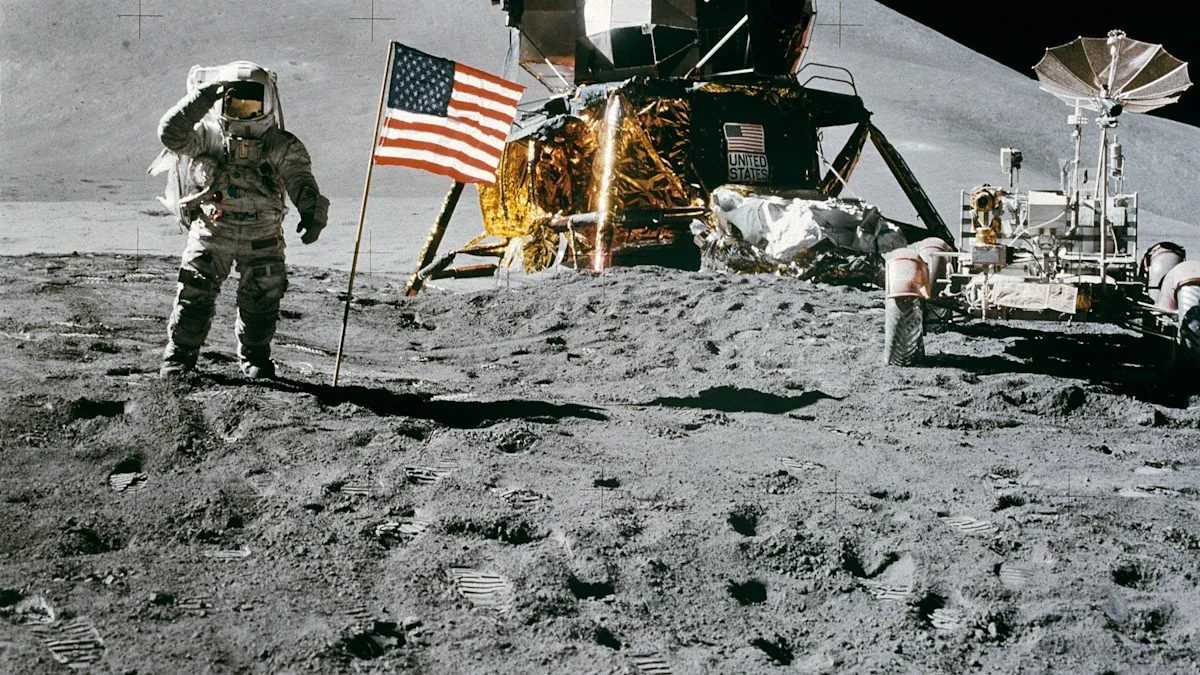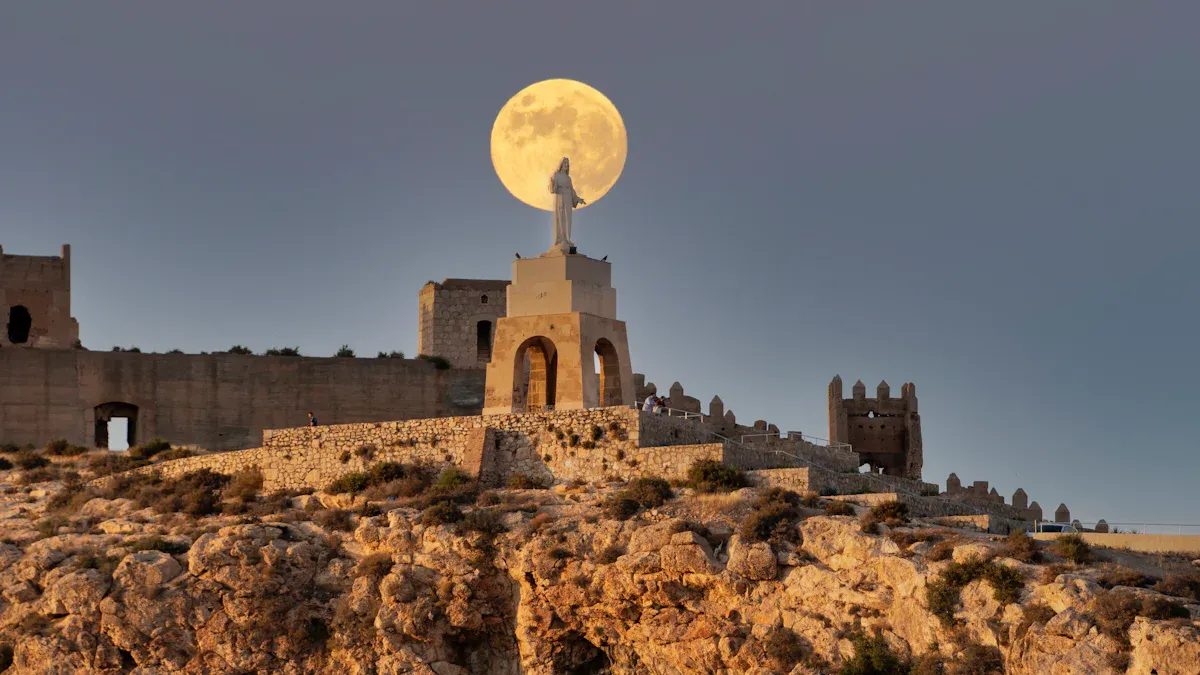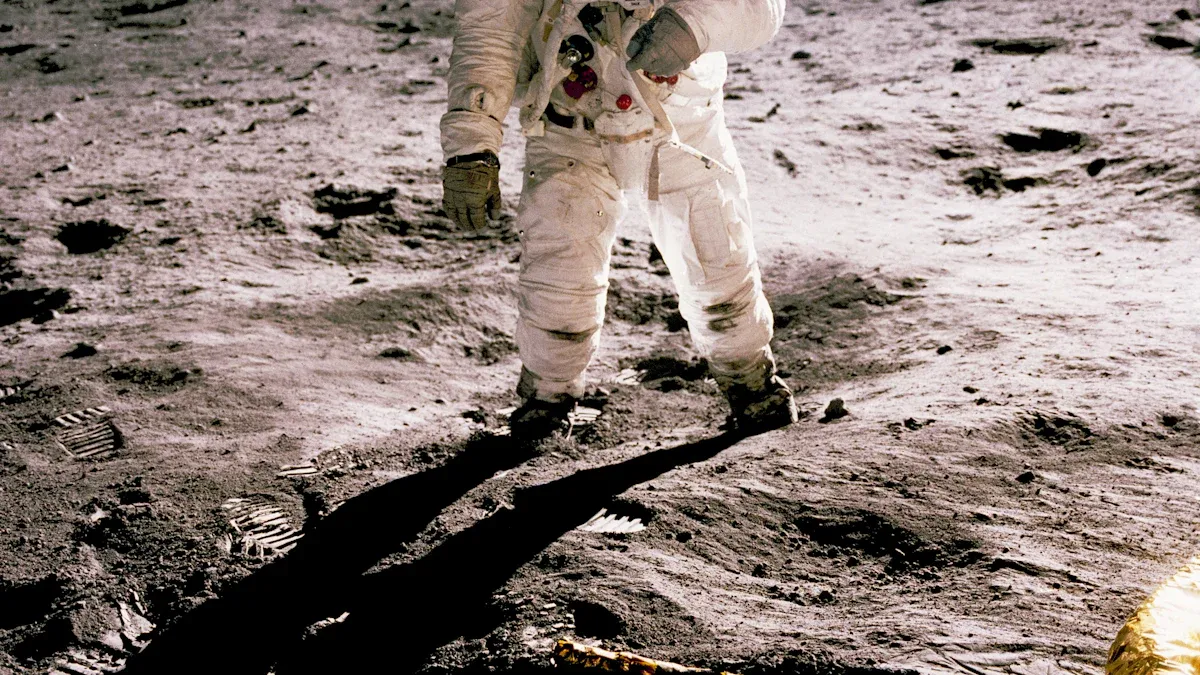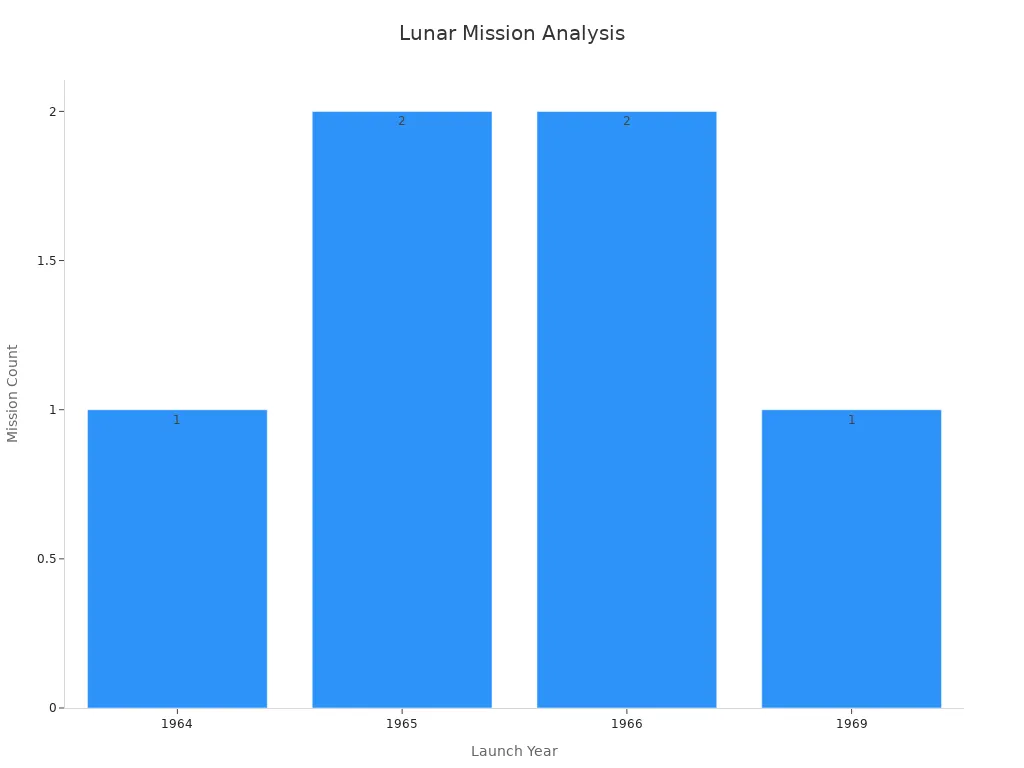Why the Moon Matters to Science and History
Why the Moon Matters to Science and History

The Moon is important for Earth's natural systems. Its gravity causes ocean tides, which affect sea life and shorelines. Scientists found the Moon formed after Earth hit a Mars-sized object. This crash shaped Earth's surface and made both bodies alike in materials. The Moon also keeps Earth's tilt steady, helping the climate stay stable for millions of years. Studying the Moon helps scientists learn about Earth's past and changes over time.
Key Takeaways
The Moon's pull causes ocean tides, helping sea life and shores.
Learning about the Moon helps scientists know Earth's past and space changes.
The Moon inspired people to explore space, improving travel and tools.
Long ago, people used the Moon to track time and for ceremonies, showing its impact on life and culture.
The Moon still inspires art, books, and media, showing its importance today.
The Moon's Role in Science

Insights into Earth's Formation
The Moon helps us learn about Earth's early days. Scientists believe the Moon formed after Earth hit a Mars-sized object billions of years ago. This idea is called the Giant Impact Hypothesis. Rocks from the Moon, brought back by Apollo missions, are like Earth's mantle rocks. This shows they share a common origin. The Moon moves away from Earth about 1.5 inches each year. This movement matches what the hypothesis predicts and shows how Earth and the Moon are connected.
The Moon is like a time capsule for studying planets. Its surface shows signs of old impacts and volcanoes. Unlike Earth, the Moon has no weather or tectonic changes. This keeps its surface mostly the same over time. Scientists can study the Moon to learn about the solar system's past. Recent missions have taught us about the Moon's minerals, shape, and heat history. These studies help us understand how planets change over time.
Contributions to Space Exploration
The Moon has helped humans explore space. Early Moon missions tested tools and ideas for traveling farther. The Apollo program proved humans could live in space for a long time. These missions prepared us for future space journeys.
Robotic missions have also taught us more about the Moon.
In 1994, Clementine mapped the Moon and found signs of ice.
Lunar Prospector, in 1999, confirmed ice at the Moon's poles.
The Lunar Reconnaissance Orbiter made detailed Moon maps in 2009.
In 2019, China's Chang’e-4 landed on the Moon's farside, showing new exploration skills.
Year | Mission | Contribution |
|---|---|---|
1994 | Clementine | Found hints of ice on the Moon. |
1999 | Lunar Prospector | Confirmed ice at the poles. |
2009 | Lunar Reconnaissance Orbiter | Made detailed maps of the Moon. |
2019 | Chang’e-4 | Explored the Moon's farside. |
These missions show how the Moon helps us explore space and plan for the future.
The Moon's Impact on Astronomy
The Moon has been important to astronomy for ages. Its brightness and phases made it easy for ancient people to study. Early astronomers used the Moon to make calendars and predict eclipses. By 600 B.C., Greek scientists knew the Moon was round and orbited Earth. They also understood why its shape changes each month.
Today, the Moon still helps astronomy. It has no air, so telescopes there can see space clearly. Moon observatories could take better pictures of stars and galaxies than Earth ones. The Moon's craters also show how asteroids shaped it and Earth.
The Moon inspires big questions in science. It helps us learn about Earth's history and the solar system. By studying the Moon, we also explore the chances of life on other planets.
The Moon's Historical Significance

Ancient Timekeeping and Calendars
The Moon was key to early timekeeping systems. Ancient people watched its phases to measure time. This helped them plan farming and social events. For example, Stonehenge aligns with the Moon's cycles. This shows how people used the Moon to track seasons and harvests. The Ishango bone, which may show a six-month lunar cycle, also proves the Moon's role in early human ideas.
Evidence Description | Time Period | Location |
|---|---|---|
Cave art of wild animals linked to lunar phases | 40,000 years ago | Borneo |
Ishango bone, possibly tracking a six-month lunar cycle | 8,000 to 20,000 years ago | Belgian Congo |
10,000-year-old lunar calendar carved in the ground | 10,000 years ago | Near Aberdeen, Scotland |
The Moon's phases also shaped beliefs. Many cultures linked the Moon to natural events like childbirth. A study in rural areas without electricity found more births during certain lunar phases. This suggests the Moon's light and cycles affected human behavior.
The Moon in Human Exploration
The Moon has always inspired discovery. Early humans used its light for hunting and rituals. Its gravity caused tides, shaping ecosystems and possibly evolution. These effects made the Moon important in human history.
Its gravity influenced life on Earth.
The Moon helped early science understand nature.
In modern times, the Moon became a focus for science. Apollo 11 was the first human mission to land there. This event showed centuries of curiosity and the drive to explore beyond Earth.
The Space Race and Lunar Landings
The Space Race showed the Moon's global importance. The U.S. and Soviet Union competed to reach it first. The Soviets had early wins, like Luna 9's soft landing and Luna 10's orbit. But the U.S. made history with Apollo 11, the first crewed Moon landing.
Name | Nation | Launch | Arrival | Type | Outcome |
|---|---|---|---|---|---|
Ranger 7 | USA | July 28, 1964 | July 31, 1964 | Impact | First U.S. close-up Moon pictures |
Luna 9 | USSR | Jan. 31, 1966 | Feb. 3, 1966 | Lander | First soft landing and photo from the Moon |
Luna 10 | USSR | March 31, 1966 | April 3, 1966 | Orbiter | First lunar orbiter |
Apollo 11 | USA | July 16, 1969 | July 20, 1969 | Lander | First crewed Moon landing |

The Space Race advanced technology and united people in wonder. Apollo 8's orbit of the Moon led to Apollo 11's success. These missions proved the Moon's lasting importance as a symbol of human dreams and skill.
The Moon's Cultural Influence
Mythology and Symbolism
The moon has been important in myths worldwide. Ancient people linked it to gods and nature's cycles. In Greek myths, Selene was the moon goddess, and Artemis connected it to hunting. In Hindu stories, Chandra ruled the moon phases and emotions.
Some believed the moon affected human bodies. Studies in the 1980s found links between menstruation and moon phases.
Study Year | Findings |
|---|---|
1980 | |
1987 | Two of four histograms showed significant differences in menstruation timing related to the lunar cycle. |
1981 | Similar findings as previous studies, indicating a tendency to menstruate during the light half of the lunar cycle. |
These studies show how the moon became a symbol of fertility and life. It shaped beliefs and traditions for many years.
The Moon in Art and Literature
Artists and writers have always found the moon inspiring. Vincent van Gogh’s "Starry Night" shows its glowing beauty. Claude Monet painted peaceful moonlit scenes. In books, the moon often stands for mystery or change. Shakespeare’s "A Midsummer Night’s Dream" uses the full moon for magical moments.
Musicians also celebrate the moon. Frank Sinatra’s "Fly Me to the Moon" and Pink Floyd’s "Dark Side of the Moon" honor its charm. Moon photography is popular too, showing its light and shadows in the night sky.
Modern Cultural Representations
The moon still influences today’s culture in media and entertainment. The Apollo 11 landing is a key event shown in "The Big Bang Theory" and the "Apollo 11 (2019)" documentary. Shows like "From the Earth to the Moon (1998)" tell the story of humans reaching the moon and its global impact.
Here are ways the moon inspires creativity:
Van Gogh and Monet painted beautiful moonlit scenes.
Writers use the moon to show mystery and change.
Songs like Sinatra’s "Fly Me to the Moon" praise its beauty.
Photos of the moon highlight its light and shadows.
The moon’s role in art, books, and media shows its lasting power in human imagination and storytelling.
The Moon's Effect on Earth's Natural Systems
Tides and Ecosystems
The moon’s gravity pulls on Earth’s oceans, causing tides. These tides make sea levels rise and fall regularly. Tides are very important for ocean life. They mix water, spreading nutrients for plankton and other creatures. Many sea animals depend on tides to breed and find food. For instance, crabs and fish follow tidal changes for their activities.
Tides also affect people’s lives. Coastal towns rely on tides for fishing and fun. Scientists study the moon to predict tides accurately. This helps keep boats safe and protect ocean resources.
🌊 Tip: Tides do more than move water; they support life everywhere.
Stabilizing Earth's Climate
The moon keeps Earth’s tilt steady at 23.5 degrees. This tilt controls seasons and weather. Without the moon, Earth’s tilt would change a lot. This could cause extreme weather and harm animals and people.
The moon’s steady pull keeps Earth’s climate balanced. Scientists study this to learn how Earth stayed livable for so long.
The Moon's Role in Earth's Night Sky
The moon lights up the night sky and looks beautiful. Its phases, like crescent and full, have guided people for ages. Farmers once used the moon to decide when to plant crops. Its light also helps night animals hunt and find their way.
Astronomers use the moon’s movements to track time and study space. The moon reflects sunlight, making it glow and inspiring artists. It reminds us of Earth’s link to the universe.
The Moon is important for Earth and science. Its gravity causes ocean tides. These tides help sea life by spreading nutrients. Many sea animals follow the Moon's phases to breed or act. This shows how much the Moon affects life on Earth.
The Moon also has a big role in history and culture. It stands for human curiosity and the wish to explore.
In the future, the Moon will still be a focus for research. It lights up the night sky and connects Earth to space. By studying the Moon, scientists learn about Earth's past and plan for space travel.
FAQ
What is the Moon made of?
The Moon is mostly rock and metal. Its surface has dark basalt from old volcanoes and bright anorthosite rock. Underneath, there is a mantle and a small iron core. Scientists study Moon rocks to understand its makeup better.
Why does the Moon have phases?
The Moon's phases happen because it moves around Earth. As it orbits, sunlight lights up different parts of it. This creates shapes like crescent, half, and full Moon. The full cycle takes about 29.5 days.
How does the Moon affect Earth's tides?
The Moon's gravity pulls on Earth's oceans, making tides. High tides happen on the side facing the Moon and the opposite side. Low tides occur in between. These tides help sea life and affect coastal activities.
Why is the Moon important for space exploration?
The Moon is a good place to test space missions. It helps scientists create tools for exploring farther. Its closeness to Earth makes it great for studying planets and preparing for Mars trips.
How did the Moon inspire ancient cultures?
Ancient people used the Moon to track time and seasons. Its phases helped make calendars and guided rituals. Many cultures linked the Moon to gods, fertility, and nature, showing its role in beliefs and daily life.

